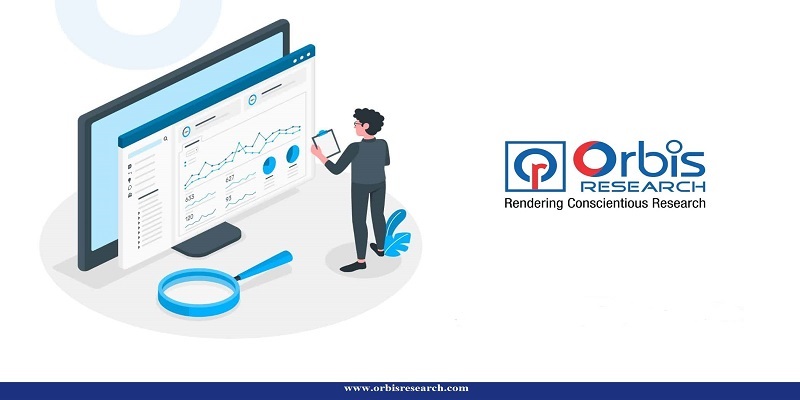
Press Release, Orbis Research How This Report’s Market Value and CAGR of the Global Machine Tool Software Market Are Calculated
Through a methodical and multifaceted process that blends quantitative and qualitative analysis, the market value and Compound Annual Growth Rate (CAGR) of the global Machine Tool Software Market is determined. Large-scale data collection from primary and secondary sources is the first step in the process. Interviews with industry experts, surveys, and discussions with important parties such as distributors, suppliers, and manufacturers are used to acquire primary data. Reputable trade journals, government reports, financial records, and pertinent databases are the sources of secondary data.
Request a sample report @ https://www.orbisresearch.com/contacts/request-sample/7293982
Following collection, the data undergoes stringent validation and triangulation procedures to guarantee precision and dependability. This entails using statistical methods to find any discrepancies and cross-referencing the data from various sources. The market size for the base year is then calculated using the verified data. The market size is determined by adding up the revenues of the major participants in the Machine Tool Software market, accounting for each participant’s market share, and correcting for factors like acquisitions and mergers, market exits, and new entries.
Machine Tool Software market Segmentation by Type:
Controlling Software
Analyzing Software
Programming Software
File Management Software
Machine Tool Software market Segmentation by Application:
Automobile Industry
Aerospace
Others
Direct Purchase the report @ https://www.orbisresearch.com/contact/purchase-single-user/7293982
By examining past market data and speculating on potential future growth trends, the CAGR is computed. To do this, it is necessary to identify both potential growth drivers and obstacles, including supply chain disruptions, competitive pressures, and economic downturns, as well as technology developments, rising demand, and advantageous regulatory regulations. An annualized growth rate throughout the forecast period is obtained by applying a logarithmic formula to the market size estimates. This yields the CAGR.
The research also includes scenario analysis to take into consideration various market conditions, including worst-case, best-case, and most likely scenarios. Giving stakeholders a thorough grasp of the market’s growth potential under different conditions, aids in delivering a variety of prospective market valuations and CAGRs.
Key Players in the Machine Tool Software market:
Siemens Industry Software Inc.
Aspire
Easel CNC
AutoCAD
Breton SpA
ESPRIT by DP Technology
Innovalia-Metrology
MSC SOFTWARE – HEXAGON MANUFACTURING INTELLIGENCE
GibbsCAM
CNC Software
Onto Innovation Inc
mySCADA Technologies s.r.o
PPI Systems Inc
Softgate GmbH
Inkscape
Marlin
Fusion 360
SolidWorks
DENSO Robotics Europe
TEX COMPUTER SRL
What Main Market Analysis Were Conducted and What Techniques Were Used to Produce This Global Machine Tool Software Market Report?
To ensure accuracy, comprehensiveness, and reliability, a range of research methodologies are employed in conjunction with in-depth market analysis to generate the Global Machine Tool Software Market report. The SWOT, PESTLE, and Porter’s Five Forces studies are the three main market analyses; each offers particular insights into various market elements.
SWOT Analysis: The market for Machine Tool Software is examined to determine its Strengths, Weaknesses, Opportunities, and Threats. Understanding the internal and external elements that may have an impact on the market is aided by this comprehensive perspective on the industry’s competitive environment and growth prospects.
Do You Have Any Query Or Specific Requirement? Ask to Our Industry Expert @ https://www.orbisresearch.com/contacts/enquiry-before-buying/7293982
PESTLE Analysis: This study looks at the environmental, political, social, technological, legal, and economic aspects that affect the Machine Tool Software market. It provides a macro-environmental viewpoint that aids in the comprehension of the larger dynamics that may impact market performance by stakeholders.
Porter’s Five Forces Methodology: The intensity of competition in the Machine Tool Software market is assessed using Porter’s Five Forces Methodology, which takes into account the degree of rivalry among suppliers and customers, the threat of new rivals and substitutes, and the negotiating strength of suppliers. It offers perceptions of the profitability potential and the market structure.
About Us
The study makes use of both quantitative and qualitative research techniques. Interviewing industry experts, gathering information from focus groups, and examining customer behaviour and market trends are all components of qualitative research. By contrast, quantitative research uses statistical methods to examine numerical data, including market share, growth rates, and size. Primary sources like industry reports and surveys are used to gather this data, in addition to secondary sources like financial records and government publications. These analyses, together with other research techniques, guarantee that the report presents a thorough and accurate picture of the Machine Tool Software market, providing stakeholders with insightful information.
Contact Us:
Hector Costello
Senior Manager – Client Engagements
4144N Central Expressway,
Suite 600, Dallas,
Phone: +1 (972)-591-8191,
Email: sales@orbisresearch.com